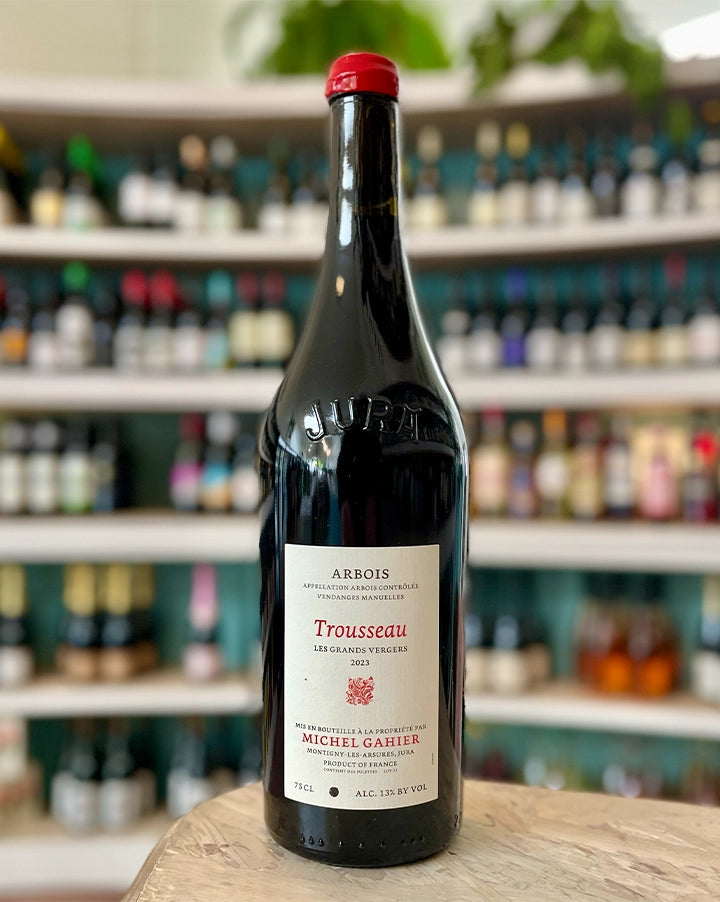Michel Gahier 'Les Grands Vergers' 2023 Trousseau Arbois
Michel Gahier 'Les Grands Vergers' 2023 Trousseau Arbois
750ml
13% abv
"Les Grands Vergers" comes from Michel's most venerable, and oldest, Trousseau plantings, established in the 1940s on ideal exposure that borders the Puffeney's famed "Les Berangères" plot. This cuvée consistently stands out as the crown jewel of Michel's red wine portfolio. The wine showcases intense depth, striking mineral character, and a densely textured, umami-rich profile that develops magnificently with cellar aging.
The Gahier family has been resident in the Jura since 1525. The family domaine is 6.5 hectares with the vineyards concentrated in the village of Montigny-les-Arsures, the place recognized as the home of Trousseau. Michel Gahier has learned from the best, as neighbor and friend of Jacques Puffeney. His observations and ongoing dialogue with Puffeney have instilled skills and sensibility that produce undeniably outstanding wines that clearly express the very particular terroir of this corner of the Jura.
Gahier harvests and vinifies his wines parcel by parcel. Each wine ultimately is derived exclusively from a single vineyard site. His whites are produced both ouillé (topped-up) and sous voile (left to form a protective veil of yeast), though all have a minerality that distinguishes them as jurassien. The Vin Jaune is a testament to the old traditions of the Jura, and many of Gahier’s Vin Jaune barrels are a century old, acquired from Jacques Puffeney’s cellar after his retirement. The same “yeast mother” living in these barrels that nurtured Puffeney’s wine for so many years is now safely ensconced at chez Gahier.
Gahier’s home base of Montigny-lès-Arsures is known charmingly as “The Capital of Trousseau,” and may well produce the most thrilling, layered, and dynamic renderings of the grape variety in the entire Arbois appellation. Gahier’s viticulture is organic; the reds are destemmed; the yields are quite low (averaging 30 hectoliters per hectare). There is a period of cold maceration followed by a cuvaison of approximately one month with some pigeage done in the initial parts of the process. The wines, both white and red, are bottled without filtration.
Share

